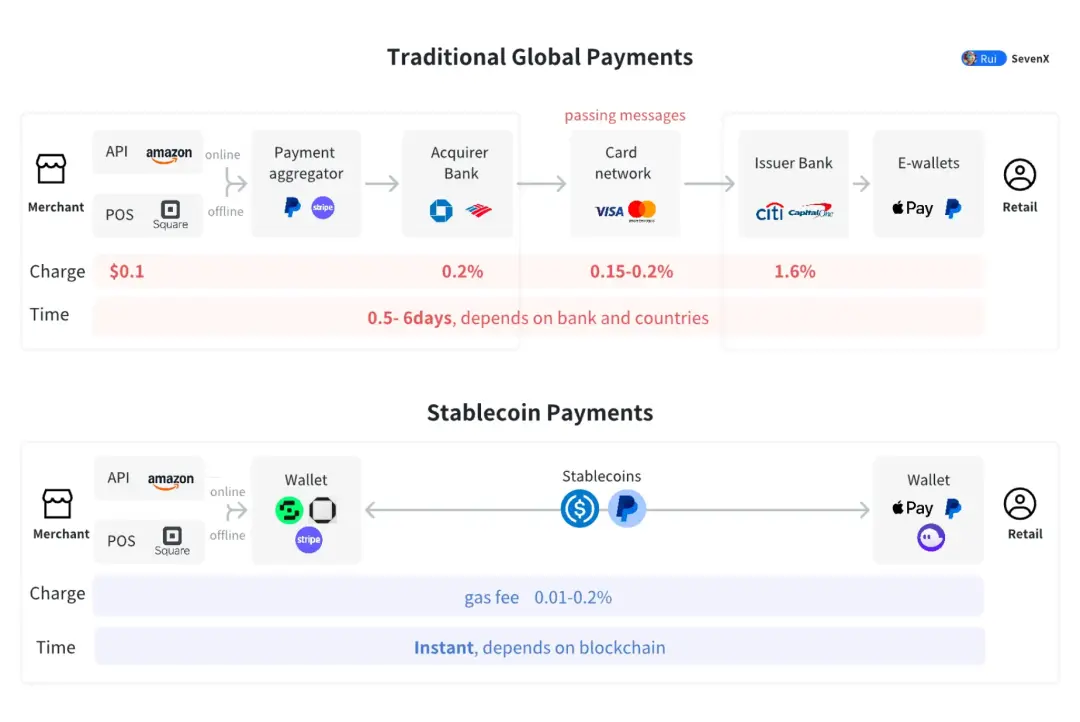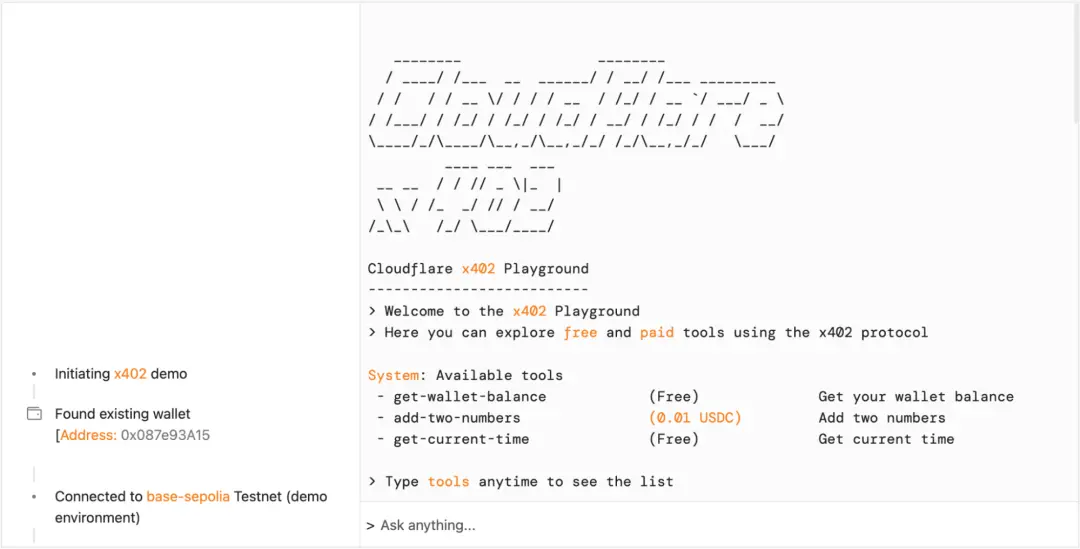Written by Sleepy.txt
You may not have heard of Cloudflare, but its services are nearly impossible to avoid if you're online.
This company is an invisible giant in the internet world. Whether you order takeout, watch short videos, open your email, or log into your company's systems, you're likely passing through its network. Like a giant digital shield and accelerator, it provides security protection and content distribution services to nearly one-fifth of the world's websites.
When web pages load in seconds and your favorite apps are protected from hacker attacks, Cloudflare is often behind the scenes. It's the internet's veritable "water, electricity, and gas," the underlying infrastructure that supports the efficient and secure flow of data around the world.
On September 25, Cloudflare made a landmark strategic decision, extending its infrastructure footprint to a whole new dimension and announcing the launch of its own stablecoin, the NET Dollar.
Why issue your own stablecoin?
Cloudflare CEO Matthew Prince gave the answer, "For decades, the internet's business model has been built on advertising platforms and bank transfers. The next era of the internet will be driven by pay-per-use, fragmented payments, and microtransactions."
With annual revenue exceeding $1.6 billion and processing trillions of requests daily, Cloudflare is the internet's underlying infrastructure. Yet, within this vast digital network, payments are the only component it doesn't control. This sense of loss of control is plaguing a growing number of large enterprises.
Apple settles tens of billions of dollars annually for App Store developers, Amazon handles massive flows of third-party sellers, and Tesla maintains payment transactions with over 3,000 suppliers worldwide. All of these giants face the same friction: lengthy settlement cycles, high fees, and complex cross-border compliance. More importantly, they've lost control of the core closed-loop system.
As commerce becomes increasingly digital and automated, this outdated financial infrastructure becomes a bottleneck. Consequently, large companies are choosing a more direct response: if they can't change the old system, they'll build a new one.
Why do big companies need their own stablecoins?
The emergence of the NET Dollar has led to a rethinking of the motivations behind issuing stablecoins. Unlike products like USDT and USDC, which aim for universal circulation, Cloudflare's approach to issuing the coin is more pragmatic: it aims to first address payment issues within its own ecosystem.
There is a big difference behind this.
USDT and USDC have targeted the entire crypto market from the beginning, relying on wide acceptance to accumulate scale; while NET Dollar currently appears more like an "internal currency" tailored for Cloudflare's business network.
Of course, boundaries are not fixed. PayPal’s PYUSD is a prime example. When it launched in 2023, it only served PayPal’s own payment system, but now supports the exchange of hundreds of cryptocurrencies, far exceeding its initial scope.
The same is likely to be true for corporate stablecoins, which have the opportunity to move from internal efficiency tools to broader circulation scenarios.
The key difference lies in motivation. Traditional stablecoin issuers primarily profit from reserve investment, while enterprises issue stablecoins to optimize processes and seize initiative. This divergence in their design, application, and future paths will determine their differences.
For large companies, payments have always been the "last mile" of their closed business cycle. However, this link is controlled by banks and payment institutions, and presents the problems mentioned at the beginning of this article. Therefore, integrating payments into their own systems and using stablecoins to rebuild a controllable closed loop has become a strategic choice for large companies.
The true value of corporate stablecoins lies in the fact that they do not have to pursue inflated narratives, but can instead cut into the pain points in the process like a scalpel, greatly improving efficiency.
In supply chain finance, this value is more easily seen.
International supply chain finance is inherently a frictionless system. A payment from the US to Vietnam involves traversing multiple time zones, currencies, and banks. According to World Bank data, the average global remittance cost remains above 6%.

Average transaction cost (%) for remittances to specific countries/regions | Source: WORLD BANK GROUP
Enterprise stablecoins can reduce this process to minutes. US companies can pay directly to suppliers in Vietnam within minutes, reducing costs to less than 1%. This significantly shortens the time it takes for funds to transit, improving the efficiency of the entire supply chain.
More importantly, the ownership of settlement power has also changed.
In the past, banks acted as intermediaries, controlling the speed and cost of transactions; but in a stablecoin network, companies themselves can dominate this key link.
Besides efficiency, cost is also a burden that businesses cannot ignore. Exchange rate losses, bank processing fees, and card network channel fees in cross-border payments may seem like minor expenses, but when accumulated, they can erode a company's competitiveness.
This is the significance of corporate stablecoins: they bypass traditional financial intermediaries and restructure the cost structure. This change isn't just about reducing the absolute amount, but also about simplifying and increasing the transparency of the structure. Under the traditional model, businesses face a complex system of fixed fees, percentage fees, exchange rate spreads, and intermediary fees, all calculated in an opaque manner and difficult to accurately predict.
In a stablecoin network, the cost is reduced to just one factor: on-chain transaction fees. These fees are transparent, predictable, and relatively stable. This allows businesses to more accurately calculate expenses and profits, making decisions with greater confidence.

Traditional financial global payment links compared to stablecoin payment links | Source: SevenX Ventures
Furthermore, cash flow management itself can be transformed. Traditional methods rely on manual operations and banking systems, resulting in complex processes, low efficiency, and prone to errors.
When enterprise stablecoins are combined with smart contracts, capital flows can be automated according to pre-set conditions. Payments are automatically released upon supplier delivery and acceptance, and funds are disbursed instantly upon reaching project milestones. Instead of manually monitoring accounts, businesses can simply embed rules into contracts.
This mechanism brings more than just improved efficiency. The transparent, tamper-proof payment logic reduces the trust cost between partners and allows potential disputes to be resolved in advance.
When more partners are included in the same payment system, network effects begin to emerge. Suppliers, distributors, partners, and even end users all settle in the same stablecoin, and the value of the network will increase exponentially.
This value is not only reflected in scale, but also creates a lock-in effect. Once deeply integrated into a company's stablecoin system, the cost of switching to another system becomes high, not only in terms of technology switching costs, but also in terms of learning, relationships, and even opportunity costs.
This layer of stickiness will become the company's most solid moat. In the fierce competition, companies that have a stablecoin ecosystem can not only better control costs and cash flow, but also rely on network effects to consolidate long-term advantages.
How corporate stablecoins can enter various industries
Different industries have their own pain points, and corporate stablecoins are being used as potential solutions. They may not have been widely implemented yet, but they have already demonstrated the possibility of being integrated into real businesses.
E-commerce platforms: Automation of deposits, commissions, and refunds
For e-commerce platforms, stablecoins are becoming a testing ground for building a new generation of payment infrastructure. Shopify's partnership with Coinbase allows merchants in 34 countries to accept USDC settlement, but this is just the beginning.
The deposit paid by merchants upon joining the platform can be directly written into the smart contract, automatically deducted in the event of violations and automatically refunded upon contract expiration. Platform commissions can also be settled in real time, with each completed transaction automatically transferring funds from the merchant's stablecoin account to the platform.
The refund process has also been reshaped. In the past, cross-border refunds often took weeks and had to go through layers of banking procedures. With stablecoins, the refunds can be processed in minutes, creating a completely different experience.
Furthermore, stablecoins can also support micropayment scenarios. Consumers can pay for browsing product pages, receive personalized recommendations, and even pay for priority customer service. These small transactions, which are almost impossible in traditional payment systems, are now possible in a stablecoin environment.
Manufacturing giant: Unified network for supplier payments and inventory financing
Manufacturing is the most globalized sector, with supply chains often spanning dozens of countries. For companies like Apple and Tesla, coordinating payments, financing, and security deposits across thousands of suppliers is a massive systemic undertaking.
If these companies issue their own stablecoins, they can establish an efficient and low-cost payment network internally. Payments to upstream suppliers, arranging inventory financing, and managing quality deposits—processes that previously required cross-bank, cross-currency, and manual processes—can now be completed instantly within the same network.
More importantly, this digital payment system can be integrated with a company's existing management systems. When the ERP system detects a parts shortage, it can automatically trigger an order and complete payment. When the quality inspection system identifies a defective batch, it can immediately deduct payment from the supplier's deposit.
Tesla, for example, has over 3,000 suppliers across more than 30 countries. Using a stablecoin for unified settlement, suppliers could directly use Tesla Coin, with Tesla handling the dollar exchange. This would not only reduce costs but also give Tesla greater control over key processes.
Content Platforms: New Paths for Profit Sharing and Micropayments
The content industry is undergoing a creator-driven restructuring. Whether it's short-form video platforms like YouTube and TikTok or text-based platforms like Substack and Medium, the biggest challenge is how to efficiently and fairly distribute revenue to creators around the world.
Corporate stablecoins are seen as a potential solution. They allow platforms to instantly settle revenue with creators worldwide, eliminating the need for complex cross-border banking systems and high transaction fees. Furthermore, micropayment mechanisms allow for even more granular distribution of revenue.
YouTube pays tens of billions of dollars in royalties to creators each year, but payment methods vary across countries, exchange rate fluctuations affect actual revenue, and tax procedures are extremely complex. If the platform built its own stablecoin network, it could achieve truly unified global settlement.
This mechanism could also spawn new business models: readers could pay per article, viewers could pay for individual video clips, and listeners could pay for individual songs. A more refined distribution of value would not only allow creators to receive more direct returns, but would also encourage them to produce higher-quality content.
Cloud service providers: a settlement testing ground for the machine economy
Cloudflare's NET Dollar is a prime example of a cloud service provider experimenting with stablecoins. With the development of artificial intelligence and the Internet of Things, communication and transactions between machines are becoming increasingly frequent. These transactions are characterized by high frequency, small amounts, and full automation, which traditional payment systems cannot support.
In this scenario, an AI model might need to pay for calling another model's API, an IoT device might need to account for its consumed computing power, and a self-driving car might need to pay for mapping services. These payments might be only a few cents or even a few cents, but they can be triggered thousands of times per second.
Stablecoins, especially those designed for programmatic trading like the NET Dollar, can support these high-frequency, low-value automated payments. Machines can independently determine the time, amount, and recipient of payments based on pre-set rules, without the need for human intervention.
To this end, Cloudflare partnered with Coinbase to establish the x402 Foundation, developing a protocol that allows machines to make payments directly to each other. When one AI model calls the services of another, the fees are settled instantly. This type of exploration is building the underlying payment infrastructure necessary for the future machine economy.

The x402 Proving Grounds real-time demo interface developed by Cloudflare | Source: Cloudflare
Stablecoin swaps and new B2B payment networks
Once every major company has issued a stablecoin, the question that arises is how these "corporate currencies" can interoperate with each other. The answer points to a brand new B2B payment network.
In such a network, stablecoins held by different companies can be seamlessly converted through swap protocols, which technically rely on the liquidity pools of decentralized exchanges. A supplier receiving payment in Tesla Coin can instantly exchange it for Apple Coin or US dollars without having to go through the cumbersome banking system.
In order for this system to truly work, there are still several hurdles that need to be overcome.
First, exchange rate pricing. How is the exchange rate between different corporate stablecoins determined? This may require a supply and demand pricing mechanism similar to the foreign exchange market.
The second issue is the source of liquidity. Who will provide sufficient liquidity? Will it rely on professional market makers, or will it be through mutual channels between companies? This remains to be determined, and further industry research is needed.
Finally, there's risk management. How can we mitigate credit and operational risks during the exchange process? This isn't just a technical issue; it also requires clear guidance on compliance.
Stripe has already begun exploring this area. In May 2025, it launched the world's first AI-powered payment model and a stablecoin payment suite. With a single click, businesses can use USDC to settle transactions on multiple public blockchains, including Ethereum, Solana, and Polygon.
Stripe’s idea is very clear. Instead of issuing its own currency, it is better to allow more companies to easily access stablecoin settlement, thereby turning itself into the underlying infrastructure of stablecoin payments.
Even more interesting is the potential for the formation of "industry alliance stablecoins" within specific industries. For example, several major automakers could jointly issue an "auto coin" to cover settlement across the entire supply chain, from parts procurement to vehicle sales. This unified currency system could significantly reduce transaction costs and promote industry collaboration.
The complexity of the automotive industry chain makes it a perfect testing ground. A single vehicle involves tens of thousands of parts, supplied by suppliers spread across the globe. If the entire supply chain were settled using a single stablecoin, redundant processes involving multiple currencies and banks could be eliminated, greatly simplifying payments.
The advantages of a consortium stablecoin are straightforward. The industry's scale is sufficient to support liquidity, transaction models are standardized, and closed-loop systems mitigate the impact on the traditional financial system. However, challenges remain: how to balance the interests of different companies, whether large corporations will seize the opportunity to strengthen control, and whether governance mechanisms can remain transparent—all of these questions can only be answered through practice.
All visions of corporate stablecoins ultimately hinge on regulatory compliance. Whether it's a single company or an industry consortium, achieving true market acceptance requires transparent reserve custody, regular third-party audits, and full disclosure to regulators.
In July 2025, the US GENIUS Act came into effect, establishing clear legal boundaries for stablecoin issuance for the first time. Stablecoins with an issuance exceeding $10 billion must be subject to federal regulation, with reserves limited to US dollars, bank deposits, or short-term US Treasury bonds, and completely segregated from the issuer's other assets.
In August of the same year, Hong Kong’s Stablecoin Ordinance was officially implemented. It requires issuers to hold at least HK$25 million in paid-in capital, be subject to ongoing supervision and annual audits by the HKMA, and establish comprehensive systems for anti-money laundering and customer identification.
For businesses, compliance isn't just a "must-do" requirement; it's a prerequisite for earning trust. Without transparent and reliable reserve management, even the strongest business logic will struggle to convince suppliers, partners, and customers to follow suit.
Stablecoins and the new business order
The emergence of corporate stablecoins is not just a change in payment tools, but a harbinger of the reorganization of the future business order.
They deeply integrate payment systems with the internet, empowering devices and programs with independent economic capabilities. Self-driving cars can autonomously charge and settle payments when their batteries run low, and industrial robots can automatically place orders for parts as they wear out. Machines have thus transformed from mere tools into true economic entities.
Micropayments offer a new distribution model for the content industry: videos can be charged by the second, novels by the chapter, and software by the function. This allows for more granular distribution of revenue, and consequently, changes in incentives.
When combined with artificial intelligence, the potential for innovation is further expanded. Once an AI agent has a stablecoin budget, it can independently purchase data, computing power, or other services to complete complex tasks.
In September 2025, Google launched the Agent Payments Protocol (AP2), collaborating with 60 organizations to build payment channels for AI agents, enabling direct settlements when performing tasks. This means AI will no longer be just a tool but a "digital employee" with economic capabilities, forming a new collaborative relationship with humans.
This presents a structural challenge for banks and payment companies. If businesses are able to build their own payment and clearing systems, the role of traditional financial institutions in cross-border settlement and treasury management will be weakened. In the future, banks are more likely to shift to roles such as reserve custody, compliance, and auditing, while payment companies will need to become stablecoin infrastructure providers.
From a broader perspective, corporate stablecoins may signal the beginnings of a new business order. In this system, value creation and distribution will be accomplished with unprecedented efficiency, and business relationships will become more transparent and efficient.
From medieval Venetian bills to today's stablecoins, the search for a more efficient medium of exchange has always been about finding the right medium. In this technology-driven revolution, any company aiming to gain a foothold in the future digital economy cannot afford to remain outside the loop.







